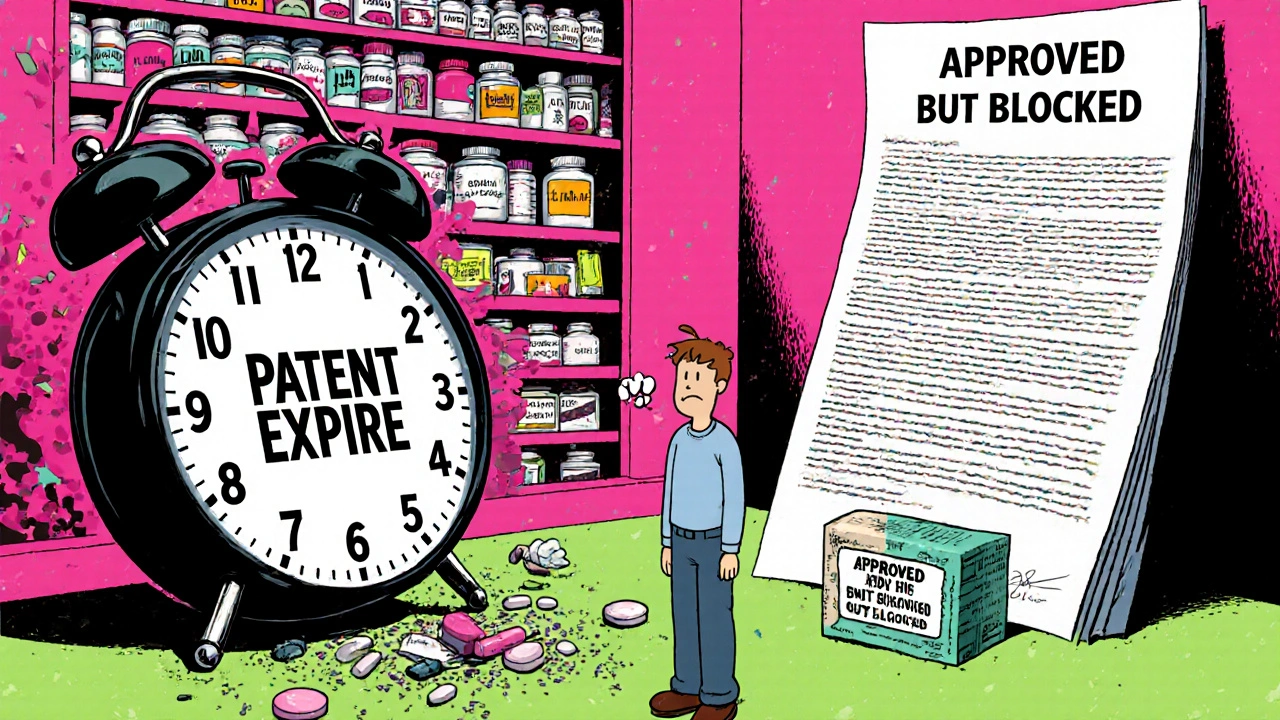Generic Drug Delay: Why Your Prescription Takes Longer and What You Can Do
When you rely on a generic drug, a lower-cost version of a brand-name medication with the same active ingredients. Also known as generic medication, it makes treatment affordable for millions. But what happens when it’s suddenly unavailable? A generic drug delay isn’t just an inconvenience—it can disrupt your health routine, force you to pay more, or even push you toward riskier alternatives. These delays aren’t random. They’re tied to how the global drug supply chain works—and who controls it.
Most generic drugs you take come from just a few countries, especially India and China. India alone produces over 20% of the world’s generic medicines, with hundreds of FDA-approved factories. But when a single factory faces inspection issues, a raw material shortage, or a shipping backlog, it doesn’t just affect one drug. It triggers a ripple effect. A delay in one active ingredient can stop dozens of pills from being made. That’s why you might see a delay in your metformin, lisinopril, or levothyroxine—even if the brand-name version is still on the shelf. These aren’t isolated problems. They’re systemic.
It’s not just about manufacturing. Regulatory checks, raw material costs, and even political trade policies can slow things down. The FDA can shut down a plant for cleanliness violations, and it takes months to get it back online. Meanwhile, drug manufacturers don’t always stockpile extra supply—because generics are low-margin products. Why invest in extra inventory when you’re barely making a profit? The result? When demand spikes, like during flu season or a new diagnosis wave, shelves go empty. And when your pharmacy calls to say your generic is on backorder, you’re left wondering: Is there another option? Can I switch? Do I wait?
Some delays are temporary. Others last months. And in the meantime, you’re stuck between paying more for the brand, skipping doses, or trying to find a different generic maker. Not all generics are the same. Some use different fillers or coatings that affect how your body absorbs the drug. That’s why switching isn’t always simple, especially for medications like warfarin, thyroid drugs, or seizure treatments where small changes matter.
But you’re not powerless. Knowing how the system works helps you ask the right questions. Ask your pharmacist: Is this delay due to a manufacturing issue or just low stock? Can we try a different generic brand? Is there a therapeutic alternative that’s available right now? You might be surprised how often there’s a solution that doesn’t cost double.
Below, you’ll find real-world stories and science-backed advice on how generic drug delays affect people like you—whether you’re managing diabetes, high blood pressure, or chronic pain. You’ll learn how to spot the signs of a coming shortage, what to say to your doctor, and how to find reliable alternatives without risking your health. This isn’t about fear. It’s about control.
Generic Drug Availability: How Long After Patent Expiration Until It Hits the Shelf?
Generic drugs don't launch right after patents expire. Legal battles, regulatory delays, and patent thickets can hold them back for years - costing patients billions. Here's how the system really works.
